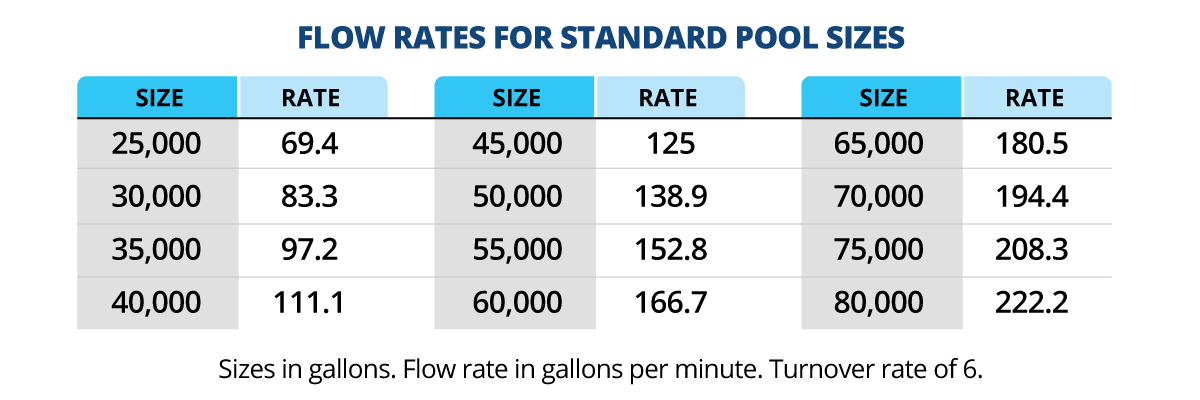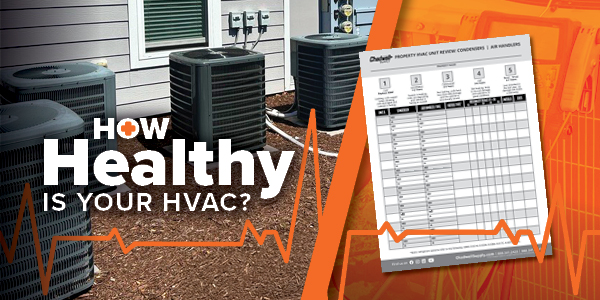Flow Rate Calculator

One of the most important ways to maintain a clear, healthy, and inviting community pool is by ensuring adequate water flow through the filtration system. Clogs, restrictions, and mechanical issues may result in insufficient water flow, leading to many different pool problems.
Checking the Flow Rate will help to ensure proper circulation and filtration.
Flow Rate Calculator
Enter your pool’s volume (in gallons), using a Turnover Rate of 6, to determine Flow Rate.
FLOW RATE (FR)*
Measures how many gallons of water move through the system per minute.
- May be measured using a flow meter installed in the return line; compare flow meter rate to recommended flow rate (see chart below).
- Must be sufficient to meet the turnover rate required by your local code.
- Daily monitoring is recommended.
- Poor flow rate may be a sign of an obstruction or mechanical problems.
To measure Flow Rate (FR), use this formula:
[Pool Volume gallons] ÷ [Turnover Rate] ÷ 60 [minutes/hour] = FR
Example: What is the flow rate for a 75,000-gallon pool with a turnover rate of 6?
75,000 ÷ 6 ÷ 60 = 208.3 gallons per minute

TURNOVER RATE (TR)*
Measures the time it takes to move the entire volume of the pool through the filtration system back into the pool. One full cycle is one “turnover.”
- New pollutants are always being introduced by bathers and environmental conditions.
- Filtering the water requires continuous circulation.
- Multiple “turnovers” occur every day to ensure adequate filtration.
- Turnover requirements vary depending on the type of pool, expected usage, and regulations.
- The turnover rate determines the necessary minimum flow rate for any pool operation.
- The following turnover rates are sample standards from the Pool and Hot Tub Alliance.
- Pools - 6 hours.
- Spas - 30 minutes.
To measure TR, use this formula:
[Pool Volume gallons] ÷ Flow Rate ÷ 60 [minutes/hour] = [TR]
Example: 200,000-gallon pool with a flow rate of 750 gallons/minute.
200,000 gal. ÷ 750 ÷ 60 = 4.44
*Both flow rate and turnover rate are regulated by local codes.





